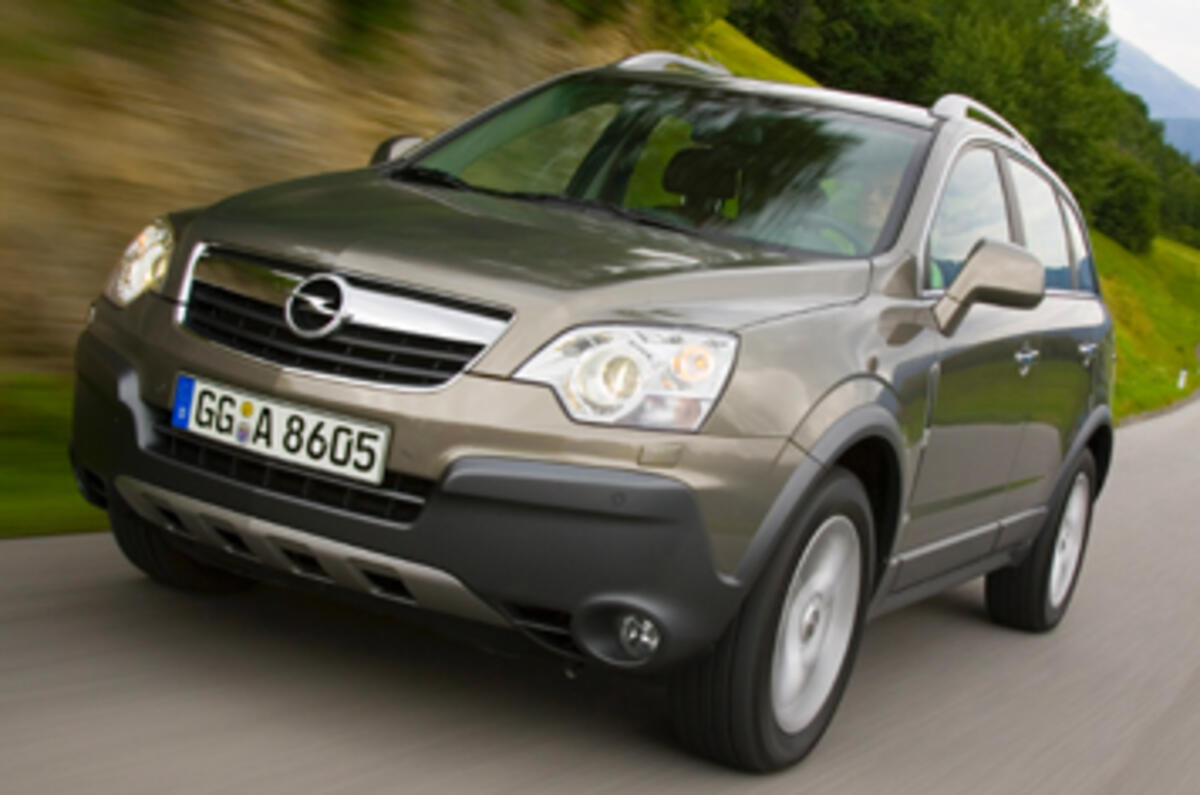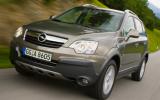What is it?
The all-new replacement for the Vauxhall Frontera, which in its day was the biggest-selling small 4x4 in its sector across Europe.
Much of what you need to know about the Vauxhall Antara is apparent in the first glimpse. Cars such as these – the soft, lifestyle end of off-roading – have style at the core of their appeal. The new Antara strikes just the right balance: a dash of off-road ruggedness tempered with a slick, design savvy appearance.
What’s it like?
Step aboard, and from the commanding, high-set driving position to the funky cabin, with chunky air vents and interesting sliver spars on the steering wheel, things look good.
There’s a decent amount of space in the rear, although the boot itself isn’t particularly accommodating and the load sill is quite high. All Antaras are five seaters – unlike the Chevrolet Captiva sister car that has a longer rear overhang to house an optional third row of seats – and there are no trick seating solutions.
Three engines will be available. At launch there’s a 2.4-litre petrol with 138bhp and a 2.0-litre turbodiesel with 148bhp, joined in a few months by a 125bhp version of the same engine.
It’s the stronger of the diesels that we’ve driven here, and it’s not to be confused with the well-known 1.9-litre GM/Fiat turbodiesel unit that’s fitted to so many different cars within the Vauxhall family. This is a new Chevrolet engine and features all the current technology: common-rail fuel injection, variable-vane turbocharging and a particulate filter.
Despite that, it’s a rather unremarkable unit - adequately refined and capable of delivering a solid (but narrow) band of thrust to move the Antara along, but little more than that.
There’s a real trough of power below 2000rpm, and then a resigned wheeze above 4500rpm that has you snatching the next gear. Our test car was an early pre-production vehicle, however, and Vauxhall says a forthcoming ECU recalibration will improve low-down response. Nevertheless, with only five - rather notchy - gears in the ‘box and a kerbweight of nearly 1800kg the Antara is hardly rapid.
The kerbweight also has an effect on the handling. Yes, it provides a car-like driving experience, but the Antara doesn’t have the nimbleness of a Toyota RAV4 or BMW X3. The steering is precise, body roll well contained, and the ride well damped, apart from when sharp ridges send tremors into the cabin.
In most scenarios the Antara is front-wheel drive, but an electro-hydraulic differential on the rear axle can send up to 50 per cent of power rearwards. The Antara isn’t likely to be faced with too many mountains to climb in its average life, but there’s a fair amount of ground clearance, a hill-descent program, integrated ESP and ASR and an anti-rollover protection system, just in case it does.
Should I buy one?
The Antara looks good inside and out, goes well enough and delivers a solid car-like drive. Equipment levels are also good and it is reasonably priced.
In other words, if you like the idea of a Griffin-badged 4x4, and you thought the Frontera was a good example of one, you're going to love the Antara. Even if you didn't, this good-looking new soft-roader is well worth consideration.













Add your comment